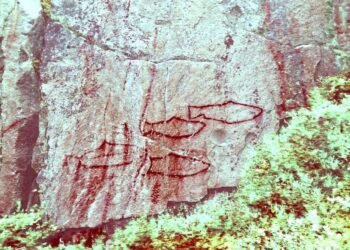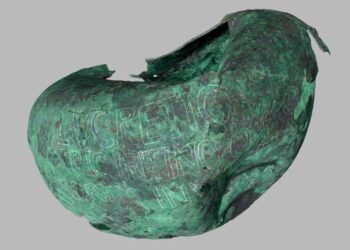Archaeologists have uncovered a collection of bone tools at Olduvai Gorge in Tanzania, dating back 1.5 million years. This finding has pushed back systematic bone tool production by more than a million years and challenges previous assumptions about the technological capability of early hominins. Crafted from the bones of elephants and hippopotamuses, these tools showcase an advanced level of cognitive ability and craftsmanship, which was thought to have emerged much later in human development.

The lead author, Dr. Ignacio de la Torre from the Spanish National Research Council (CSIC), said these findings indicate that early human ancestors “significantly expanded their technological options” by adding new raw materials to their tool-making repertoire. Twenty-seven bone fragments were analyzed, showing signs of deliberate shaping through a technique known as knapping, which is typically associated with stone tool production.
Discovered at the T69 Complex in the Frida Leakey Korongo West Gully of Olduvai Gorge, the tools were found alongside remains of large mammals. Importantly, these tools were made from limb bones, which are denser than other types of bones and therefore more suitable for crafting durable implements. The elephant bone tools measured between 22 and 38 cm (8.6 and 15 inches) in length, while the hippo bone tools ranged from 18 to 30 cm (7 to 11.8 inches).
Prior to this, the oldest known bone tools were unearthed in Europe and are believed to be 250,000 to 500,000 years old. While evidence of stone tool knapping extends back 3.3 million years, the systematic crafting of bone tools had remained elusive in the archaeological record.
Dr. Renata Peters, an archaeologist at University College London and co-author of the study, sees considerable implications in the find. “It means that human ancestors were capable of transferring skills from stone to bone, a level of complex cognition that we haven’t seen elsewhere for another million years,” said Peters.
The transition from Oldowan to Acheulean technology, beginning around 1.7 million years ago, marked a significant advancement in tool-making. The Acheulean period is best known for the production of refined hand axes, characterized by their more standardized and symmetrical shapes. According to these newly found bone tools, early hominins applied similar knapping techniques to bone, implying an understanding of materials and how to manipulate them effectively.
At present, researchers cannot determine exactly what species of hominins made these tools, but during this period, both Homo erectus and Paranthropus boisei inhabited the area. Although there is speculation on the actual function of the tools, their sharp edges and sturdy construction suggest they were likely used for processing animal carcasses.
Jackson Njau, a co-author of the study and an associate professor at Indiana University, said: “As a Tanzanian native, I’ve been captivated since my high school days by the groundbreaking discoveries made at the site.” He highlighted that the region is often referred to as the “Cradle of Humankind,” a key area in understanding early tool-making and cultural advancements in human ancestors.
The Olduvai Gorge bone tools were first identified in 2018 and were discovered through an extensive excavation project between 2015 and 2022. The site drew the researchers’ attention after several hominin teeth were found on the surface during a survey in 2010-2011, which was led by Njau and Robert Blumenschine, a professor emeritus of evolutionary anthropology at Rutgers University.
The discovery of these ancient bone tools has important consequences for archaeology and the study of human evolution. Researchers are now hoping that these findings will prompt a re-investigation into bone artifacts from other archaeological sites to determine whether further evidence of early bone tool-making has gone overlooked.
























Disclaimer: This website is a science-focused magazine that welcomes both academic and non-academic audiences. Comments are written by users and may include personal opinions or unverified claims. They do not necessarily reflect the views of our editorial team or rely on scientific evidence.
Comment Policy: We kindly ask all commenters to engage respectfully. Comments that contain offensive, insulting, degrading, discriminatory, or racist content will be automatically removed.
Formidable ! Ça donne une envie d’en connaître davantage.
Merci beaucoup,